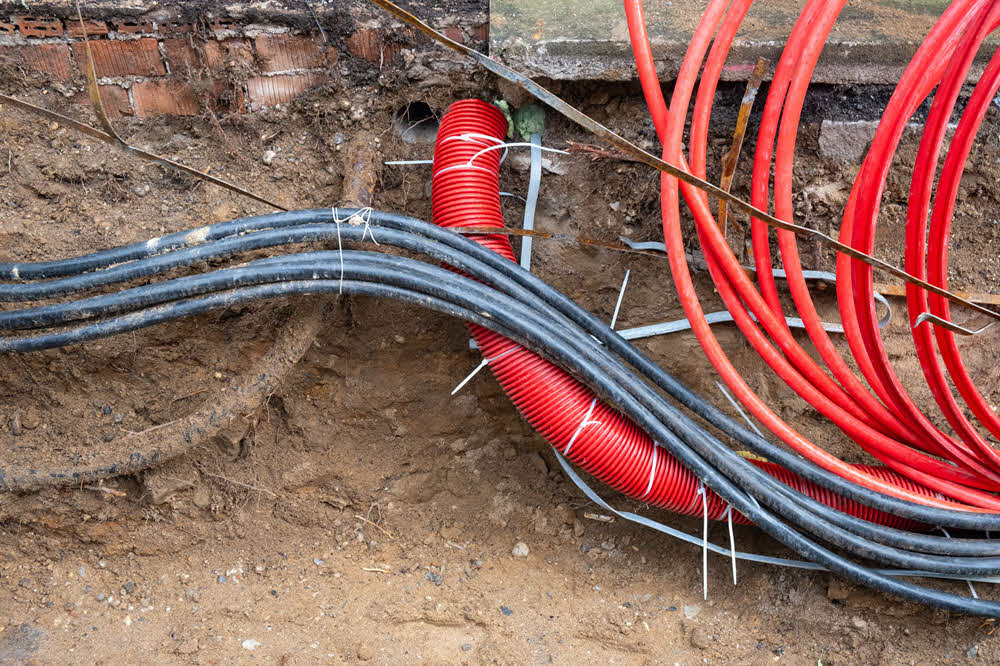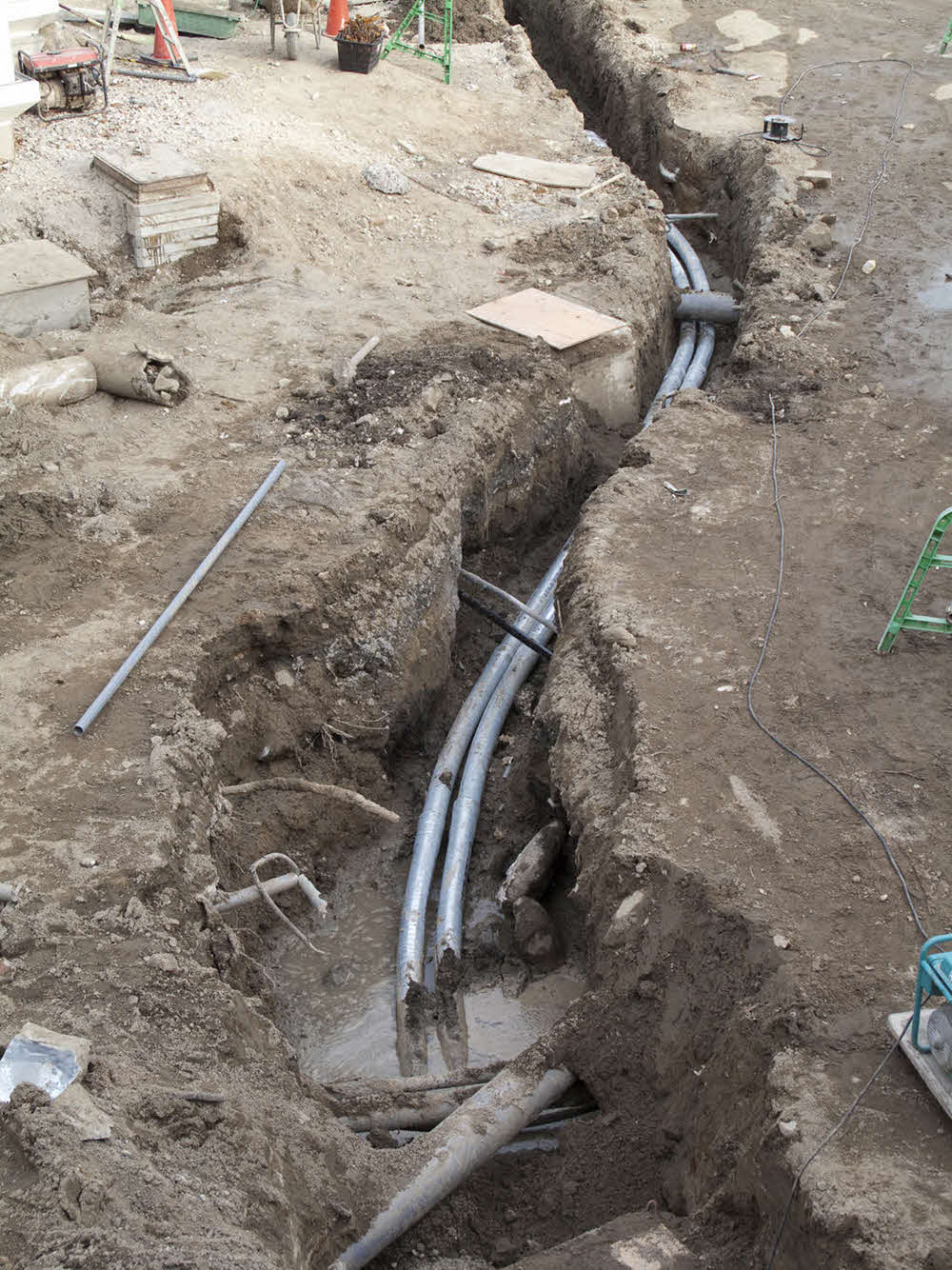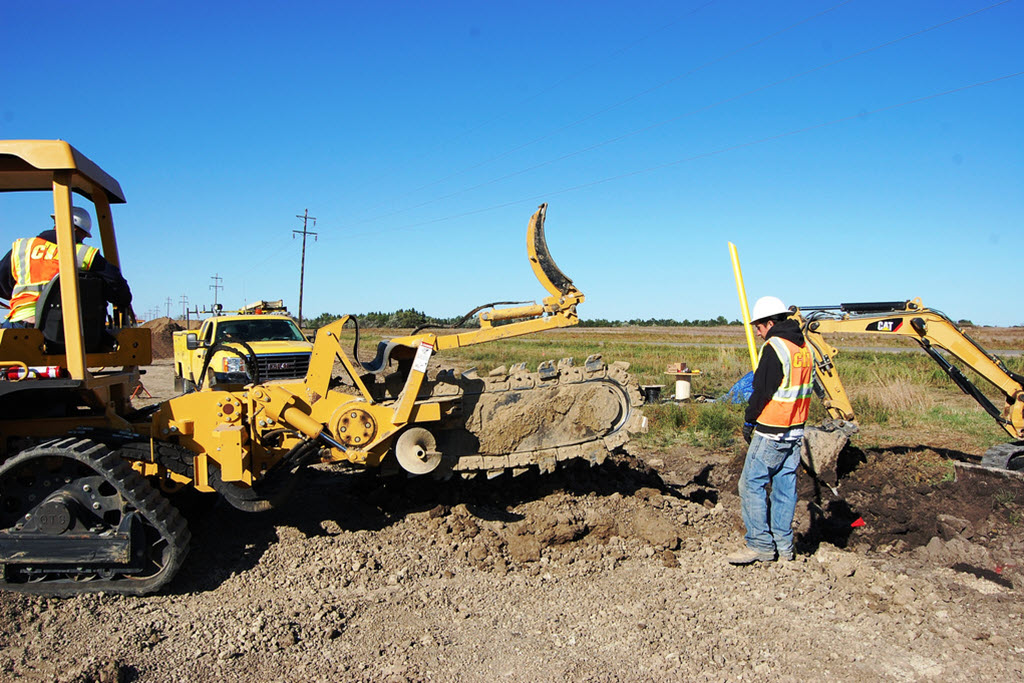Electrical Conduit Servicesin Metamora MI
Expert Conduit Installation to Support Electrical and Data Systems
We Are Locally Owned & Operated For Over 37 Years
Contact Us Today!
We Serve Businesses In And Around The Following Cities:
About Electrical Conduit Services
Stepping into the Underground: The Comprehensive Guide to Electrical Conduit Installation in Metamora
In commercial properties, a modern entity’s lifeline often resides in the invisible but essential threads of electricity that power our workplaces, stores, and business venues. In the bustling city of Metamore, commercial properties seeking reliable and secure electrical wiring might wonder about the best strategies for installing these vital connections. The answer lies beneath the city streets, in a hidden world of underground electrical conduits. These unassuming tubes play a crucial role in safeguarding electrical wires away from exposure, environmental factors, and undue wear and tear. When done right, installing a conduit underground can significantly enhance a building’s safety and efficiency.
Understanding Underground Electrical Conduits
An underground electrical conduit is a PVC tube that houses, protects, and guides electrical wiring in structures. It’s essential for running electrical lines underground to ensure safety and to comply with local electrical codes. In Metamora, constructing commercial properties often involves installing PVC conduit underground, creating a secure containment system for city-wide electrical infrastructure.
The process of installing PVC conduit for underground wiring is a task best left to professionals, given not only the complexity of the job but also the need to meet various safety and city regulations. A company like D&J Contracting, known for their longstanding service in Metamora, has the expertise and tools to handle the complete process, from trenching for electrical conduit to finalising the underground conduit installation.
The Process of Running Electrical Lines Underground
Running an underground electric line typically begins with a trench. The trenching for electrical conduit involves strategic planning to dodge any existing underground services like gas, water, or existing electrical lines. Running electrical wire near a gas line, for example, needs caution and precision to prevent dangerous cross-connections.
Once the trench is safely created, the PVC conduit for the underground wiring is laid down and connected via specific coupling methods. It’s crucial to note that the actual process of installing PVC conduit underground and running wire in conduit underground requires careful maneuvering and adherence to local codes. Respectable contractors like D&J Contracting ensure these procedures are done with complete safety, compliance, and efficiency, providing peace of mind for property owners.
Benefits of Underground Electrical Conduits
Underground electrical conduits possess numerous benefits that make them a preferred choice for Metamora’s commercial establishments. The primary advantage is improved safety. By running underground electrical service, businesses decrease the risk of electrical damages from outside factors such as harsh weather, falling objects, or accidental tampering. Encasing the electrical lines in PVC conduit underground enhances longevity by preserving the insulation and shielding wires from potential corrosion.
Consider the example of a local department store that recently upgraded their electrical infrastructure. They decided to run the underground power to their building as a long-term safety and investment measure. After engaging D&J Contracting to install their underground wiring, the store saw a significant reduction in electrical outages and repair callouts, underlining the durable nature and reliability of underground conduits.
Underground Conduits: The Way Forward
Choosing to run electrical wiring underground in commercial properties is a strategic, long-term choice. In Metamora, businesses that recognize the inherent worth of this safe, efficient method have reaped the benefits coupled with durability and peace of mind. Before diving right in, it’s vital to engage a trusted, professional service provider for these complex tasks.
As one of the leading underground conduit installation providers in Metamora, D&J Contracting sets the standard for quality, safety, and expertise. Whether you’re looking to run an underground electric line for your new commercial facility or considering upgrading from overhead wiring systems, be sure that an experienced, qualified team backs your investment.
In the evolving cityscape of Metamora, the step into the underground world of electrical conduit installation isn’t just a trend – it’s a sustainable, secure advancement powering the future of commercial properties.
Electrical Conduit Services Gallery


Call Us Today to receive your Free Quote for
Conduit For Electrical Underground in Metamora
Serving: Metamora, Michigan

About Metamora, Michigan
According to the United States Census Bureau, the village has a total area of 0.83 square miles (2.15 km), all land.
| Census | Pop. | Note | %± |
|---|---|---|---|
| 1880 | 236 | — | |
| 1890 | 314 | 33.1% | |
| 1900 | 313 | −0.3% | |
| 1910 | 276 | −11.8% | |
| 1920 | 271 | −1.8% | |
| 1930 | 293 | 8.1% | |
| 1940 | 281 | −4.1% | |
| 1950 | 390 | 38.8% | |
| 1960 | 452 | 15.9% | |
| 1970 | 468 | 3.5% | |
| 1980 | 552 | 17.9% | |
| 1990 | 447 | −19.0% | |
| 2000 | 507 | 13.4% | |
| 2010 | 565 | 11.4% | |
| 2020 | 594 | 5.1% | |
| U.S. Decennial Census | |||
As of the census of 2010, there were 565 people, 216 households, and 151 families living in the village. The population density was 680.7 inhabitants per square mile (262.8/km). There were 245 housing units at an average density of 295.2 per square mile (114.0/km). The racial makeup of the village was 98.1% White, 0.4% African American, 0.5% Native American, 0.2% Asian, 0.2% from other races, and 0.7% from two or more races. Hispanic or Latino of any race were 1.4% of the population.
There were 216 households, of which 38.4% had children under the age of 18 living with them, 56.5% were married couples living together, 8.8% had a female householder with no husband present, 4.6% had a male householder with no wife present, and 30.1% were non-families. 24.5% of all households were made up of individuals, and 7.4% had someone living alone who was 65 years of age or older. The average household size was 2.62 and the average family size was 3.11.
The median age in the village was 39.4 years. 27.8% of residents were under the age of 18; 5.6% were between the ages of 18 and 24; 24.1% were from 25 to 44; 30.7% were from 45 to 64; and 11.7% were 65 years of age or older. The gender makeup of the village was 48.5% male and 51.5% female.
As of the census of 2000, there were 507 people, 188 households, and 137 families living in the village. The population density was 765.4 inhabitants per square mile (295.5/km). There were 204 housing units at an average density of 308.0 per square mile (118.9/km). The racial makeup of the village was 96.84% White, 0.39% Native American, 0.20% Asian, and 2.56% from two or more races. Hispanic or Latino of any race were 0.79% of the population.
There were 188 households, out of which 33.0% had children under the age of 18 living with them, 60.6% were married couples living together, 9.6% had a female householder with no husband present, and 27.1% were non-families. 19.7% of all households were made up of individuals, and 6.4% had someone living alone who was 65 years of age or older. The average household size was 2.70 and the average family size was 3.14.
In the village, the population was spread out, with 26.6% under the age of 18, 8.3% from 18 to 24, 34.9% from 25 to 44, 19.7% from 45 to 64, and 10.5% who were 65 years of age or older. The median age was 34 years. For every 100 females, there were 92.0 males. For every 100 females age 18 and over, there were 97.9 males.
The median income for a household in the village was $58,088, and the median income for a family was $63,750. Males had a median income of $41,563 versus $26,563 for females. The per capita income for the village was $19,548. About 3.6% of families and 3.6% of the population were below the poverty line, including 1.4% of those under age 18 and 7.4% of those age 65 or over.
Call Us Today to receive your Free Quote for
Conduit For Electrical Underground in Metamora
Related Services in Metamora, Michigan
We Serve Businesses In The Following Zip Codes:
48007, 48015, 48021, 48026, 48035, 48036, 48038, 48042, 48043, 48044, 48045, 48046, 48047, 48048, 48050, 48051, 48066, 48071, 48080, 48081, 48082, 48083, 48084, 48085, 48088, 48089, 48090, 48091, 48092, 48093, 48098, 48099, 48225, 48230, 48236, 48310, 48311, 48312, 48313, 48314, 48315, 48316, 48317, 48318, 48397